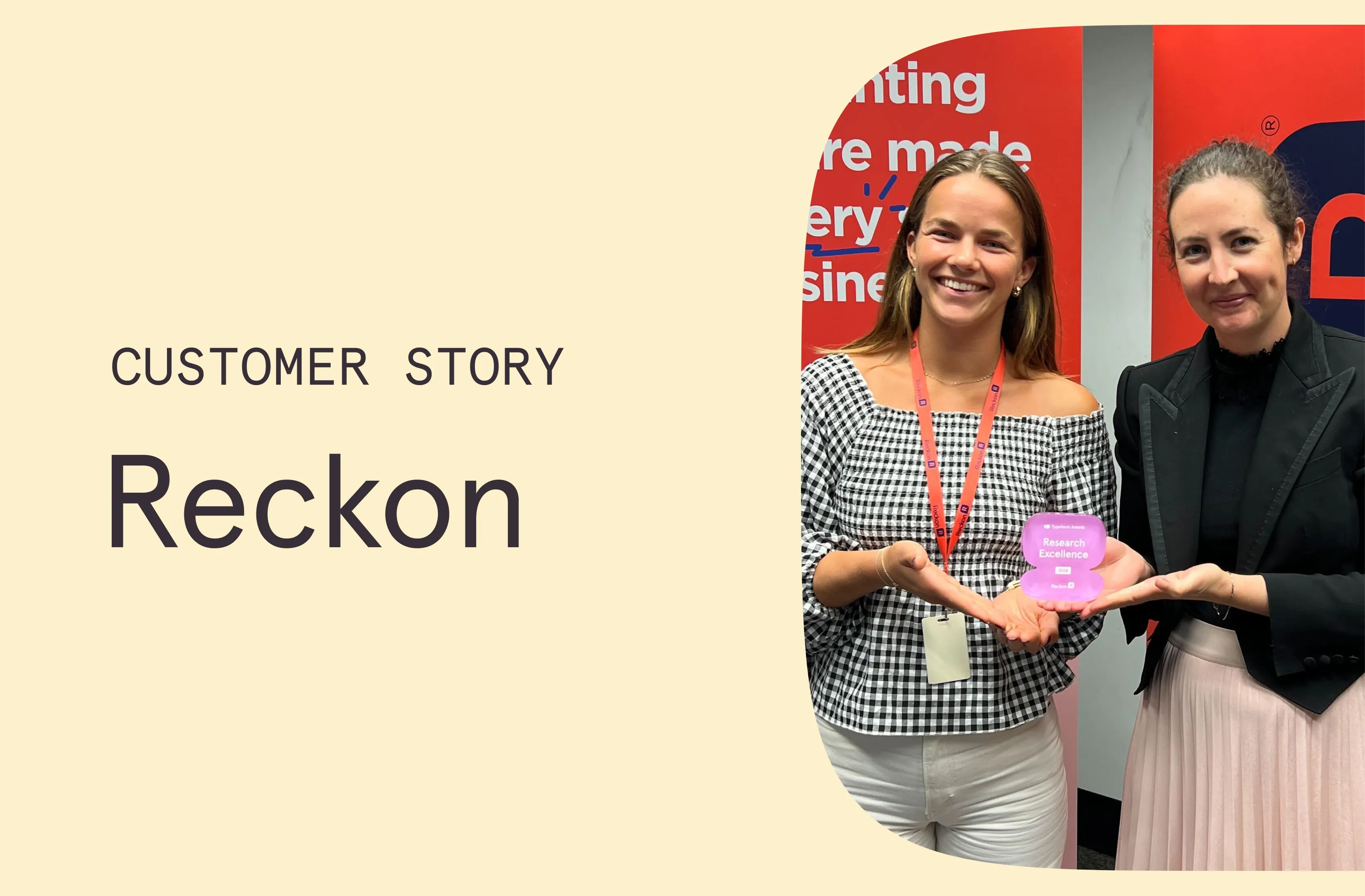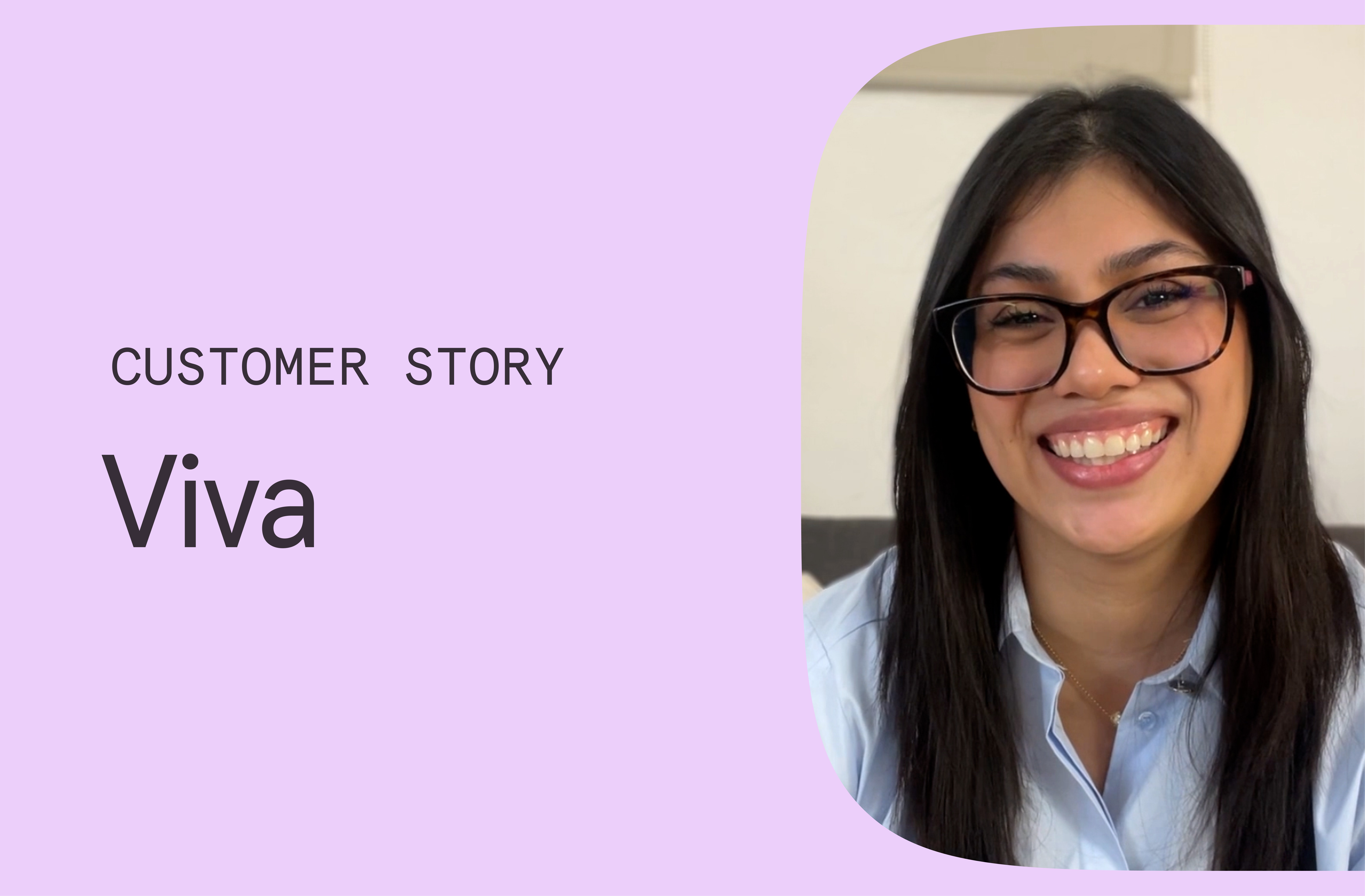How Reckon used Typeform to transform its voice of the customer program
Learn how Reckon created a data-driven customer survey using Typeform to collect insights, validate assumptions, and drive real business impact.

Australian-based accounting software company, Reckon, knew they needed to hear from their customers to inform and validate the business’ 2025 strategy. While they were able to rely on some customer engagement touch points, they still weren’t getting the full picture.
After much consideration, Kelly Jennings, Head of Research & Design, and Kristina Hedberg, Product Designer, decided to launch an annual customer feedback survey using Typeform. The goal of the survey was to challenge assumptions and gather actionable insights from their customers.
Preparing for success
As soon as Kelly and Kristina embarked on this project they knew it was going to be a huge survey. The company had never launched a research effort at this scale before, and there were many working hypotheses and assumptions which hadn't been challenged for a while. They spoke with each team to understand their learning objectives, mapping everything out before creating the survey.
They spoke with 18 different leaders across the business. Kelly explained that they used the MECE method (Mutually Exclusive, Collectively Exhaustive) to help them organize information and identify overlapping themes.
Starting with the learning objectives ("what would you like to learn from our customers?") enabled them the freedom to find overlaps in what teams were trying to learn, and scripting survey questions to answer the ultimate objective. Had they started with survey questions, they would have ended up with highly niche questions and could have struggled to get the true learning that was being sought.
They spent a lot of time working on the script and crafting the questions before they even started building it in Typeform. They workshopped everything— removing question overlaps, while considering the structure and wording to create engaging questions and minimize form fatigue.
Once they started building the survey in Typeform, logic and branching was an essential feature. Every learning objective had targeting criteria, outlining the best audience to provide the insight. Using this, alongside the segmentation questions at the start of the survey, respondents were only surfaced with the relevant questions for them.
“One of our principles when we spoke to each leader was asking about their learning objective. We asked - what are you going to do with the data? You have to take action on the data, because if you're not going to take action, we're not going to ask the question. We know there's a lot of questions in the form, and we don't want to fatigue our customers as they go through the survey.” - Kelly Jennings
Watching the results roll in
The plan for sharing the survey was simple, it would be sent via email as Kelly and Kristina only wanted to hear from existing customers. They created a 3-part email campaign to introduce the concept of an annual customer survey and remind customers to complete it. They also incentivised the survey, entering respondents into a prize draw once they’d submitted their answers.
A survey builder's work is never done, as they say. Kelly and Kristina keenly watched out for any recurring drop off points in Typeform and were surprised by changes in form completion time as the weeks progressed. This gave them some great insights into how they would structure the survey next time.
“It was so exciting when we finally launched the Typeform survey. I was basically sitting there refreshing the results page every five minutes. We’d spent so long mapping things out and planning it. So it was really exciting to see the results come through.” - Kristina Hedberg
Forming new solutions
All their hard work paid off as they received 10 times more responses to the survey than they had initially expected, which proved that customers were engaged and keen to share their feedback.
But most importantly, it was the quality of answers that made this survey a success. They were able to break assumptions and prove how strategic research can have an impact on the business.
The fact that Typeform is this really robust platform that lets you branch conditional logic - it helped get us what we needed, and get us to the heart of “you said this, and now that”. Our CEO and leadership team agreed these are the most amazing results that we've had from our customers for a long time. - Kelly.
The survey is now the baseline for starting new design projects. By using comments and sentiments they can build out new research around it to inform decisions they make with the project.
The business is also undertaking several projects directly linked to the feedback they received, including revamping key areas in the software, and making support improvements by implementing live chat, and improving web ticketing and onboarding.
There are so many avenues they can take from the results - whether it’s influencing the road map or understanding customer pain points - Kristina and Kelly are delighted to see how much of an impact the survey is having across the business, and are looking forward to jumping back into Typeform as they begin preparing for the 2025 annual survey, gathering new insights and comparing results from last year.
Feeling inspired? Get started with a template



